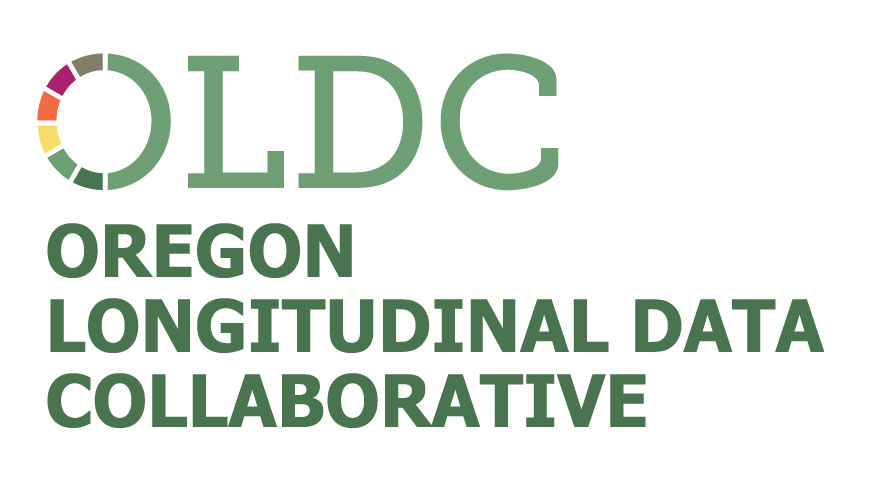
The Oregon Longitudinal Data Collaborative (OLDC) links data about students as they move through K-12, postsecondary education, and the workforce. We develop in-depth reports and research to inform improvements in student learning, training, and workforce opportunities. Here you can learn about the goals of our work and the data we draw from.
About the OLDC
The Oregon Longitudinal Data Collaborative (OLDC) manages Oregon’s Statewide Longitudinal Data System (SLDS), a system that houses data from K-12 education, postsecondary education, and the workforce. We use this system to conduct studies and provide data reports to state agencies and/or to the general public. Longitudinal data can help to identify inequities, challenges, and successful outcomes of programs across student populations and geographic regions. This helps policy makers to identify policies and programs that can address the needs of Oregonians.
OLDC Research and Reports
The OLDC is a collaboration between multiple state agencies, and our staff work at the Higher Education Coordinating Commission (HECC). The HECC, Oregon Department of Education (ODE), Oregon Employment Department (OED), and Teacher Standards and Practices Commission (TSPC) all provide the data used in the reports. These data partner agencies determine what data is provided to the OLDC, what reports and research studies we use the data for, and how that data is securely stored and used. The OLDC works with the data partner agencies to ensure that the student and individual-level data is secured in the system and used appropriately.
Learn More About Our Data Sources
The OLDC partner agencies collect student data, and the OLDS serves as a central hub where the data can be linked and analyzed.
We analyze across the following types of data:
-
K-12 Education, including public school student and staff information (ODE data)
-
GED® completers, including individuals who pass the GED® exam (GED® Testing Services data)
-
Postsecondary Education in Oregon, including data from public-degree granting institutions (HECC data)
-
Postsecondary Education in other States, including public and private degree-granting institutions (National Student Clearinghouse data)
-
Educators in Oregon, including educators who complete training in Oregon (TSPC data)
-
Employment and Wages, including business who report unemployment insurance (OED data)
History of the OLDC
The Oregon Legislature first directed the state to design the OLDC system in 2011. Originally located in the Oregon Education Investment Board (now sunset), the OLDC was moved to the Chief Education Office with legislation passed in 2015. After receiving approval from the State Chief Information Office in early 2016, the Legislature appropriated funds for the completion of the information technology (IT) project. The OLDC was implemented in 2019, creating four governance committees comprised of content experts from each of the OLDC data partners. When the Chief Education Office sunset in 2019, the administration of the OLDC was transferred to the Higher Education Coordinating Commission (HECC).
Our Values
The OLDC places a high value on integrity, transparency and equity. We acknowledge that the work we do impacts far more than state agency staff, and, as such, we need to include a wider range of voices into the process. The OLDC is committed to identifying and including community voices into all aspects of the research and reporting process.